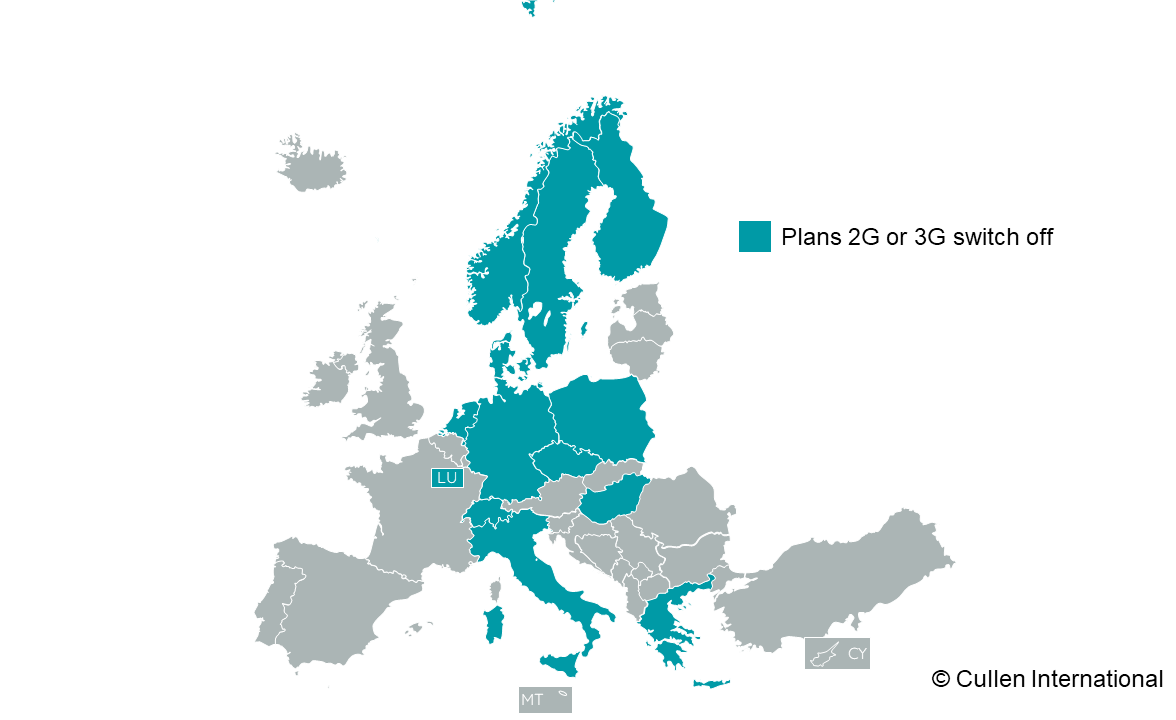In Europe, many mobile network operators (MNOs) have completed or plan to switch off their legacy 2G or 3G networks. These switch-offs are generally not regulated but in nearly all cases commercially‑driven, allowing operators to:
- increase the spectrum available for new mobile technologies, i.e. re-farming 2G/3G spectrum to help address the increased capacity requirements for 4G and 5G; and
- generate network cost savings, i.e. through lower network maintenance costs.
One of the reasons for the continued use of such legacy mobile networks is that they are still used, with 2G networks in particular being relied upon for many machine-to-machine services such as smart meters and e-call systems.
MNOs in 14 countries have/will switch off their 2G or 3G networks (Cullen International)
Cullen International’s new European benchmark shows that 14 of the 31 studied countries have MNOs which have completed or plan to switch off their legacy 2G/3G networks.
In Switzerland, Swisscom switched off its 2G network in April 2021. MNOs in four other countries have plan to switch off their 2G networks.
In Germany, Telekom switched off its 3G network in the night between 30 June and 1 July 2021, while all MNOs in Norway switched off their 3G networks in January 2021. Vodafone Group has switched off its 3G networks in Czech Republic, Italy and the Netherlands.
MNOs in 12 other countries plan to switch off their 3G networks.
In only two countries, Hungary and Italy, did the regulators become involved in whether 2G/3G networks should be switched off.
To access the full benchmark, please click on “Access the full content” - or on “Request Access”, in case you are not subscribed to our European Telecoms Service.
more news
19 December 25
CSRD transposition: Belgium, Denmark, Finland and Slovenia transpose the “stop-the-clock” directive
Cullen International’s updated benchmark tracks the progress made by the 27 EU member states in transposing the CSRD and the related “stop-the-clock” directive.
19 December 25
Global trends in AI regulation
Our latest Global Trends benchmark compares policies and regulations on artificial intelligence (AI) across 14 jurisdictions around the world.
19 December 25
Implementation of European Media Freedom Act: general overview in 12 EU member states
Our new Media benchmark shows if there are initiatives/rules in the selected countries which aim to put into application the EU Media Freedom Act (EMFA). If yes, it describes the scope of the main measures proposed. The benchmark also provides information on the next legislative or regulatory steps.